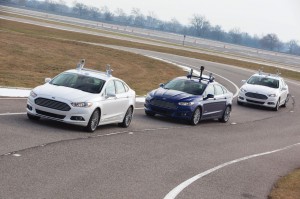
Research shows that the use of autonomous vehicle technology could improve the fuel efficiency of vehicles by 10%.
There is a simple way to improve the fuel efficiency of cars, trucks and crossovers by 10%: let them drive themselves.
Actually, it’s not quite that simple, according to researchers at Carnegie Mellon University, but what they’ve discovered is if autonomous vehicles are calibrated correctly and testing was changed to account for the change, they can achieve the aforementioned 10% improvement in fuel economy.
Without any changes, they found fuel economy could degrade by 3%, depending on how manufacturers program autonomous vehicles.
Until now, the biggest benefit espoused in favor of self-driving vehicles is the safety component. The U.S. government has been providing plenty of incentives in an attempt to accelerate the development of these technologies.
(Legislation, not technology, key obstacle to autonomous driving. For more, Click Here.)
Mark Roskind, administrator for the National Highway Traffic Safety Administration, believes that traffic fatalities could be reduced to zero with the use of autonomous technology. Automakers have also provided glimpses of concept cars decked out with options that can help “drivers” bide their time behind the wheel of an autonomous vehicle.
The study is one of the first to highlight another practical benefit: improved fuel economy.
Research conducted by Assistant Professor of Civil & Environmental Engineering Constantine Samaras and Ph.D. student Avi Chaim Mersky shows that current Environmental Protection Agency (EPA) standardized tests do not take into account how current AV technologies, like adaptive cruise control, and future AV technologies will impact vehicle fuel use.
“Because existing standardized tests don’t consider AV technologies, there are limited incentives for car manufacturers to design cars for optimum fuel efficiency. The EPA can use our research as a starting point in redesigning fuel economy testing for autonomous vehicles,” said Samaras.
The CMU team believes that as more autonomous technologies are adopted, more aspects of driving will shift from human drivers to the car. The tipping point for significant gains comes as self-driving cars become connected to one another.
(Click Here for details about Ericsson and MIT students collaborating on autonomous driving tech.)
This connection allows each vehicle to predict and react to the movement of the other vehicles on the road. It would also allow them to alter the acceleration and deceleration to maximize safety and fuel economy, the researchers claim.
In the study, researchers developed simulations to incorporate AV technologies within the bounds of current fuel economy testing, and they simulated a range of AV testing scenarios to estimate changes in fuel economy.
They examined how driverless cars will perform when sharing the road with primarily conventional vehicles, and they looked at connected vehicle scenarios in which information about a lead car’s travel behavior was communicated to an AV following this lead car.
The study found that more advanced connectivity could enhance a vehicle’s performance by providing the vehicle with more time to plan future actions. The longer the vehicle plans into the future, the greater the fuel economy benefits.
“What we have quantified is that fuel economy testing will need to account for AV technologies in the not-so-distant future,” Mersky said. To start these discussions, the study provided suggestions on how current EPA fuel economy tests could be modified to address AV technologies.
(Nissan and Renault set to launch 10 autonomous vehicles by 2020. For more, Click Here.)
The first round of autonomous vehicles is expected to hit America’s roadways around 2020, according to automakers and other industry observers, although many vehicles already possess limited autonomous capabilities now, such as the Tesla Model S and others.
